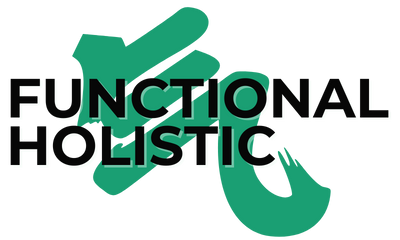Hair Loss Near the Hairline? Here’s What Your Body Might Be Telling You

Hair loss near the frontal hairline is often one of the earliest signs of stress-related shedding, hormonal disruption, or autoimmune triggers.
While it’s commonly associated with male pattern baldness, women can experience it too, especially during times of major physical or emotional depletion.
Let’s explore the most common causes, diagnostic considerations, and recovery pathways for front-of-scalp hair thinning.
I’m Gavin Larsen, a licensed acupuncturist and Traditional Chinese Medicine practitioner with over 10 years of experience helping people heal from the inside out.
Hair loss isn’t just a surface issue, and once you understand what your body’s really asking for, regrowth becomes not only possible, but predictable.
What Counts as Hair Loss Near the Hairline?
Here’s the thing. Not every receding hairline is a crisis. Some shift naturally with age (especially for guys), but when you start noticing:
- Thinning at the temples
- A widening widow’s peak
- Or hair that’s getting finer and wispier near the front
…it’s worth paying attention. Especially if it’s happening quickly, unevenly, or after a big life stressor.
This is often your body’s way of waving a little white flag, asking for support before things progress.
Why the Hairline Thins First (and Fast)
Blood naturally flows less to the front of your scalp, and hair follicles are more sensitive to hormonal changes, particularly to DHT, the infamous “hair loss hormone.”
That’s why most cases of male pattern baldness (a.k.a. male androgenetic alopecia) hit the temples and crown first.
In fact, according to a clinical review, this pattern is so consistent it’s used as a diagnostic marker. The catch? Most conventional treatments (like minoxidil or finasteride) are designed to slow the loss, not repair the systems that led to it in the first place.
That’s where things get interesting.
What’s Actually Causing It?
Hair loss at the hairline usually isn’t about one thing. It’s a combination of:
- Chronic or acute stress (hello, telogen effluvium)
- Hormonal shifts (like postpartum, perimenopause, or thyroid issues)
- Nutrient depletion (from poor digestion or restrictive dieting)
- Autoimmunity (like frontal fibrosing alopecia)
- Or just years of tight ponytails trying to look like you’re not stressed
And while male pattern baldness gets most of the airtime, more and more people are experiencing hairline thinning from depletion, not just DHT.
In Chinese Medicine, we often say the hair is an extension of the blood. And when your blood and energy reserves are running low, your body starts prioritizing resources to “non-essentials” less, like your hairline, in order to keep more vital systems going.
How Do You Know If It’s Reversible?
Here’s a quick check:
If the skin at your hairline looks smooth, shiny, or scarred, or if you’ve had loss for years with no signs of regrowth, it might be further along, especially in autoimmune types of hair loss. And if you’re dealing with androgenetic alopecia, once the follicles fully miniaturize and the arrector pili muscle detaches (yes, that’s a thing), regrowth gets much tougher.
But, and this is important, if:
- Your loss started in the last year or two
- There’s no inflammation or scarring
- You’re seeing short, fuzzy baby hairs coming in
- And it followed a big stressor, illness, diet, or hormone crash…
You’ve got options. Good ones.
So, What Can You Do About It?
Let’s start with this: most people try to treat hair loss at the surface, relying just on expensive shampoos, rosemary oil, or laser helmets that make you feel like you’re preparing for battle.
But if your body is depleted from the inside, no serum’s going to fix that.
What finally worked for me (and now for clients in clinic) was zooming out. Looking at:
- Nervous system health (because no healing happens in fight-or-flight)
- Digestion (because you can’t rebuild what you can’t absorb)
- Blood flow and circulation (especially to the scalp)
- And restoring deep reserves (what we call Jing in Chinese medicine).
Once those systems were back online, my hairline started coming back online too.
You Don’t Have to Spend Hundreds or Thousands Trying to Fix This
I found a way to fast track this process. I got tired of the guesswork, so I built a simple 30-day plan that cuts through the noise and actually works.
If you’re tired of hearing “just use minoxidil and hope for the best,” this is for you.
Cut through the noise and reverse your hair loss by clicking here
This guide is a shortcut to getting real results, no matter the state of your hairline.
Conclusion
Your hairline isn’t just a cosmetic issue. It’s a signal. One that often shows up before deeper problems set in.
Modern medicine is great at identifying patterns and naming conditions (like male androgenetic alopecia), but not always great at addressing all the mechanisms of damage in order to fully recover. That’s the gap I built this system to fill.
Because when you actually support the root systems – digestion, blood flow, nervous system, sleep – your hair doesn’t just stop falling out.
It remembers how to grow again.






